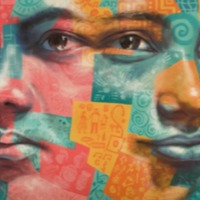
Borey
There are an estimated 610,000 people living in conditions of modern slavery in Thailand (GSI 2018). Men, women and children are victims of human trafficking for forced labour in the Thai fishing industry, subjected to physical abuse, excessive and inhumane working hours, sleep and food deprivation, forced use of methamphetamines and long trips at sea confined to the vessel. Due to the fishing industry relying on trans-shipments at sea to reduce expenditure, some find themselves trapped on long-haul trawlers for years at a time. This makes the monitoring of enslaves labour on fishing vessels costly and difficult. Borey was trafficked from Cambodia on to a Thai fishing vessel. Though he has now escaped conditions of slavery, Borey still suffers mental health issues from his trauma.
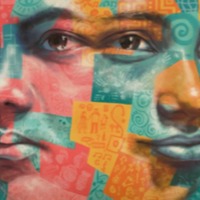
Chivy
The Global Slavery Index 2018 estimates that on any given day in 2016 there were over 3.8 million people living in conditions of modern slavery in China. Women and girls from South Asia, Southeast Asia and Africa are trafficked in to forced marriage in the country for fees of up to £30,000. The gender imbalance caused by the One Child Policy and the cultural preference for male children, has caused a shortage of women which has led to the trafficking of women to be sold as brides. As a result, many women find themselves either deceived by promises of employment, sold or abducted and forced into marrying Chinese men who have paid for them.Chivy was trafficked from Cambodia to China and forced to marry a Chinese man. Chivy tells of how escaped from her husband, going to the Cambodian consulate and the difficulties of returning home.
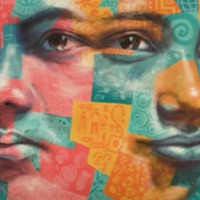
Channary
The Global Slavery Index 2018 estimates that on any given day in 2016 there were over 3.8 million people living in conditions of modern slavery in China. Women and girls from South Asia, Southeast Asia and Africa are trafficked in to forced marriage in the country for fees of up to £30,000. The gender imbalance caused by the One Child Policy and the cultural preference for male children, has caused a shortage of women which has led to the trafficking of women to be sold as brides. As a result, many women find themselves either deceived by promises of employment, sold or abducted and forced into marrying Chinese men who have paid for them. Channary was trafficked to China from Cambodia and forced to marry a Chinese man. She tells of how the translator present at the marriage registration office failed to authenticate free will, failing to prevent her forced marriage.
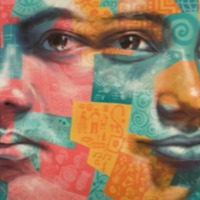
Champei
The Global Slavery Index 2018 estimates that on any given day in 2016 there were over 3.8 million people living in conditions of modern slavery in China. Women and girls from South Asia, Southeast Asia and Africa are trafficked in to forced marriage in the country for fees of up to £30,000. The gender imbalance caused by the One Child Policy and the cultural preference for male children, has caused a shortage of women which has led to the trafficking of women to be sold as brides. As a result, many women find themselves either deceived by promises of employment, sold or abducted and forced into marrying Chinese men who have paid for them. Champei travelled along with four other women to China for work. However, upon arrival she was taken to a guesthouse where she was kept for a few days before being sold in to marriage with a Chinese man.
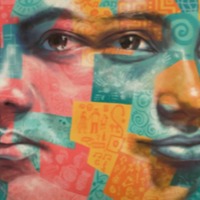
Botum
The Global Slavery Index 2018 estimates that on any given day in 2016 there were over 3.8 million people living in conditions of modern slavery in China. Women and girls from South Asia, Southeast Asia and Africa are trafficked in to forced marriage in the country for fees of up to £30,000. The gender imbalance caused by the One Child Policy and the cultural preference for male children, has caused a shortage of women which has led to the trafficking of women to be sold as brides. As a result many women find themselves either deceived by promises of employment, sold or abducted and forced into marrying Chinese men who have paid for them. Botum was working in Phnom Penh when a co-worker approached her, convincing her to travel to China for work. However, once her travel documents were obtained, they were collected and retained by an agent and Botum was trafficked to China for forced marriage.
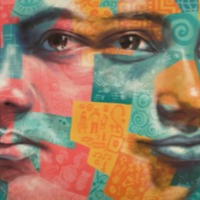
Bopha B
The Global Slavery Index 2018 estimates that on any given day in 2016 there were over 3.8 million people living in conditions of modern slavery in China. Women and girls from South Asia, Southeast Asia and Africa are trafficked in to forced marriage in the country for fees of up to £30,000. The gender imbalance caused by the One Child Policy and the cultural preference for male children, has caused a shortage of women which has led to the trafficking of women to be sold as brides. As a result many women find themselves either deceived by promises of employment, sold or abducted and forced into marrying Chinese men who have paid for them Bopha was working in Phnom Penh when she told she could earn more money moving to China and marrying a Chinese man. Though she didn’t want to, the broker eventually convinced her mother to persuade her. Bopha eventually moved to China.
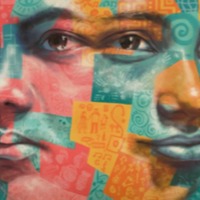
Boran
There are an estimated 610,000 people living in conditions of modern slavery in Thailand (GSI 2018). Men, women and children are victims of human trafficking for forced labour in the Thai fishing industry, subjected to physical abuse, excessive and inhumane working hours, sleep and food deprivation, forced use of methamphetamines and long trips at sea confined to the vessel. Due to the fishing industry relying on trans-shipments at sea to reduce expenditure, some find themselves trapped on long-haul trawlers for years at a time. This makes the monitoring of enslaves labour on fishing vessels costly and difficult. Boran was trafficked on to a Thai fishing vessel where he was subjected to physical violence and threats daily.
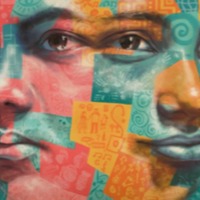
Atith
There are an estimated 610,000 people living in conditions of modern slavery in Thailand (GSI 2018). Men, women and children are victims of human trafficking for forced labour in the Thai fishing industry, subjected to physical abuse, excessive and inhumane working hours, sleep and food deprivation, forced use of methamphetamines and long trips at sea confined to the vessel. Due to the fishing industry relying on trans-shipments at sea to reduce expenditure, some find themselves trapped on long-haul trawlers for years at a time. This makes the monitoring of enslaves labour on fishing vessels costly and difficult. Atith was trafficked on to a Thai fishing vessel where he was forced to work long hours with no break, denied medical treatment and subjected to verbal and physical abuse.
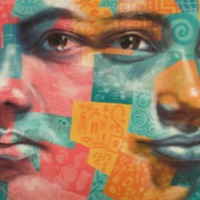
Anchaly
There are an estimated 610,000 people living in conditions of modern slavery in Thailand (GSI 2018). Men, women and children are victims of human trafficking for forced labour in the Thai fishing industry, subjected to physical abuse, excessive and inhumane working hours, sleep and food deprivation, forced use of methamphetamines and long trips at sea confined to the vessel. Due to the fishing industry relying on trans-shipments at sea to reduce expenditure, some find themselves trapped on long-haul trawlers for years at a time. This makes the monitoring of enslaves labour on fishing vessels costly and difficult. Anchaly, a Cambodian man, was looking for work when a broker told him he could earn good money working on a boat. However, when he arrived, he, along with other men, were told they had been sold.

Lina
The internal migration of Chinese people seeking work has created an opportunity for human traffickers in China. Moreover the gender imbalance caused by the One Child Policy and the cultural preference for male children, has caused a shortage of women which has led to the trafficking of women to be sold as brides. As a result many women find themselves either deceived by promises of employment, sold or abducted and forced into marrying Chinese men who have paid for them. The prevalence of poverty in China makes the poor more vulnerable to enslavement. With the National Bureau of Statistics estimating that 70,170,000 are still living in poverty, people are more desperate and thus more likely to be receptive to fraudulent job offers. 17 year old Lina was recruited to China by her cousin who approached her parents, telling them Lina could earn more money abroad. However, upon arrival she was taken to the Bride Market and placed in a home where men would come to choose wives. When she pleaded with her cousin to go home, she was told she owed $2000.

Bopha
The internal migration of Chinese people seeking work has created an opportunity for human traffickers in China. Moreover the gender imbalance caused by the One Child Policy and the cultural preference for male children, has caused a shortage of women which has led to the trafficking of women to be sold as brides. As a result many women find themselves either deceived by promises of employment, sold or abducted and forced into marrying Chinese men who have paid for them. The prevalence of poverty in China makes the poor more vulnerable to enslavement. With the National Bureau of Statistics estimating that 70,170,000 are still living in poverty, people are more desperate and thus more likely to be receptive to fraudulent job offers. Bopha left her factory job in Phnom Penh when she was told she could find work with a high salary in China. However, upon arrival Bopha was taken to the Bride Market and sold to a man with mental health issues.
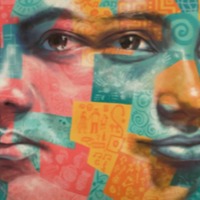
Yum
Men, women and children are victims of human trafficking for forced labour in the Thai fishing industry. Enslaved people are subjected to physical abuse, excessive and inhumane working hours, sleep and food deprivation, forced use of methamphetamines and long trips at sea confined to the vessel. Due to the fishing industry relying on trans-shipments at sea to reduce expenditure, some find themselves trapped on long-haul trawlers for years at a time. This makes the monitoring of enslaves labour on fishing vessels costly and difficult. The Thai Government has faced severe pressure to tackle forced labour specifically in the fishing sector, with the European Commission threatening a trade ban in 2015 for not taking sufficient measures to combat illegal and unregulated fishing that would cause the loss of up to US$1.4million a year in seafood exports. As a result the Government have reportedly accelerated efforts to combat labour exploitation, however despite this most workers in the Thai fishing sectors remain unregistered. Yum was in Cambodia looking for work when he decided to travel with friends to Thailand. On the way, they were met by a man who offered them work on his farm, which they accepted. They were forced to work long hours with no wages. After a month, the farmer fled and Yum was offered work on a construction site in Thailand. However, in Thailand Yum arrived not at a construction site but a sea port. It was only after days on a fishing vessel that he was told he had been sold. Subjected to months at sea with poor nutrition and daily beatings, Yum was finally able to escape one the boat reached Indonesian waters.
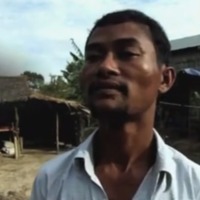
Vannak
Men, women and children are victims of human trafficking for forced labour in the Thai fishing industry. Enslaved people are subjected to physical abuse, excessive and inhumane working hours, sleep and food deprivation, forced use of methamphetamines and long trips at sea confined to the vessel. Due to the fishing industry relying on trans-shipments at sea to reduce expenditure, some find themselves trapped on long-haul trawlers for years at a time. This makes the monitoring of enslaves labour on fishing vessels costly and difficult. The Thai Government has faced severe pressure to tackle forced labour specifically in the fishing sector, with the European Commission threatening a trade ban in 2015 for not taking sufficient measures to combat illegal and unregulated fishing that would cause the loss of up to US$1.4million a year in seafood exports. As a result the Government have reportedly accelerated efforts to combat labour exploitation, however despite this most workers in the Thai fishing sectors remain unregistered. Vannak sought work away from home in order to provide for his family. He was offered a job by a taxi driver drying fish in Thailand and told that if he refused he would have to pay for the journey, money he did not have. Vannak was locked up and forced on to a fishing boat where he worked for 3 years under the constant threat of violence and never receiving any salary for his work. Eventually, Vannak escaped, swimming twenty minutes to shore and making his way back to Cambodia and his family.